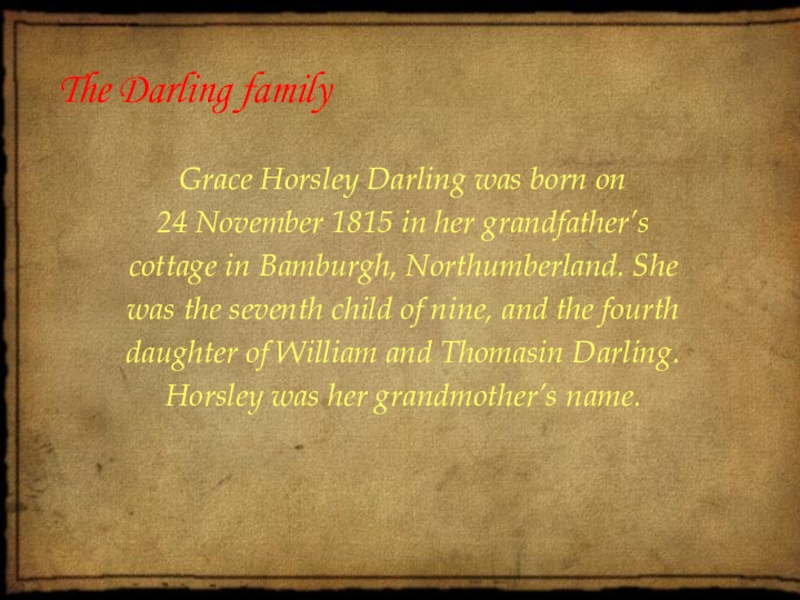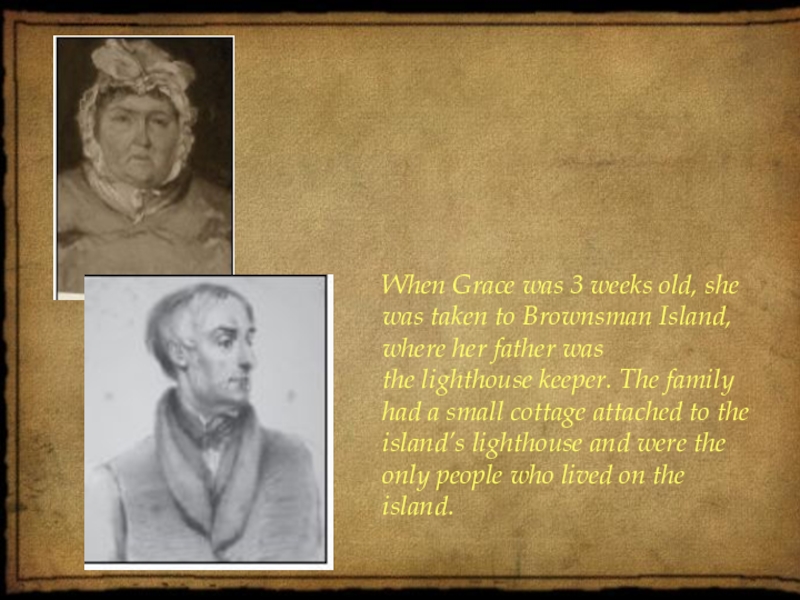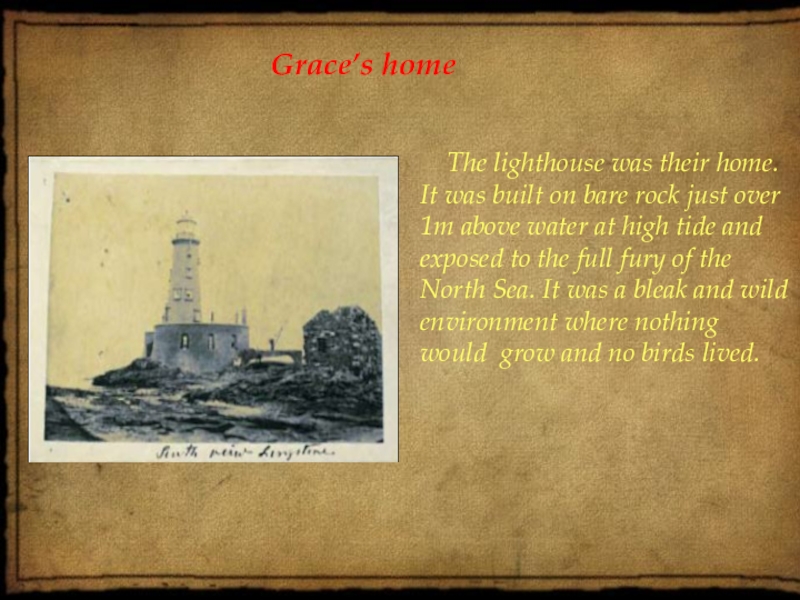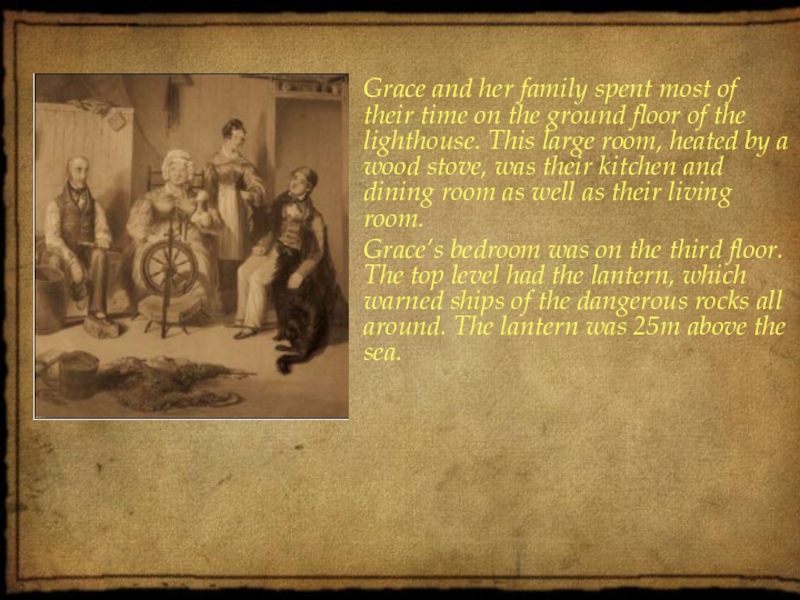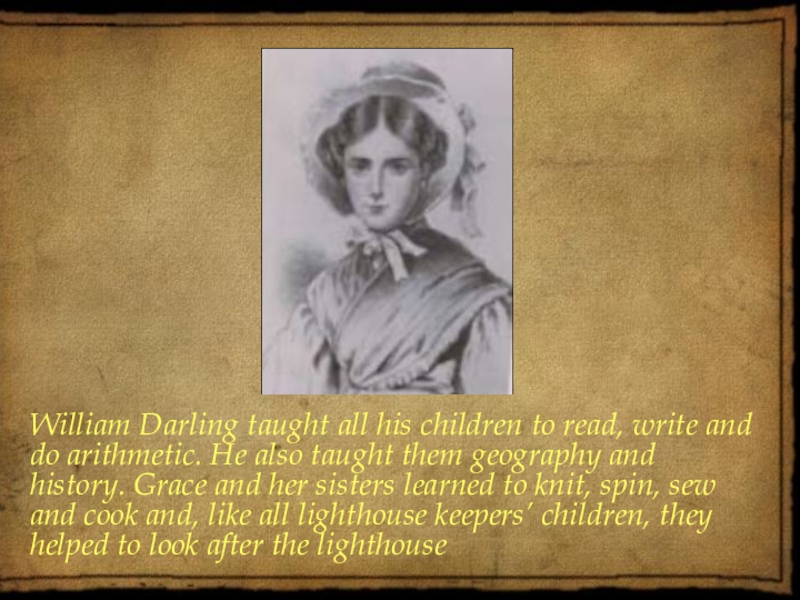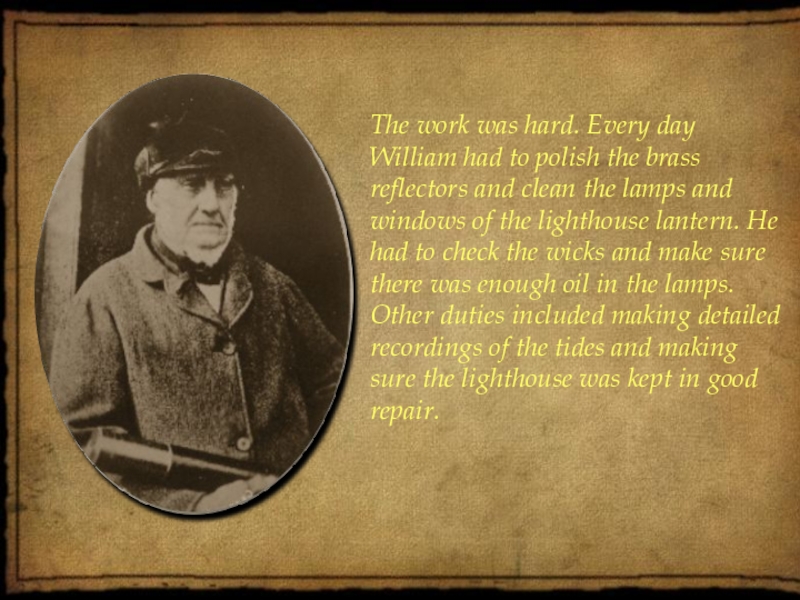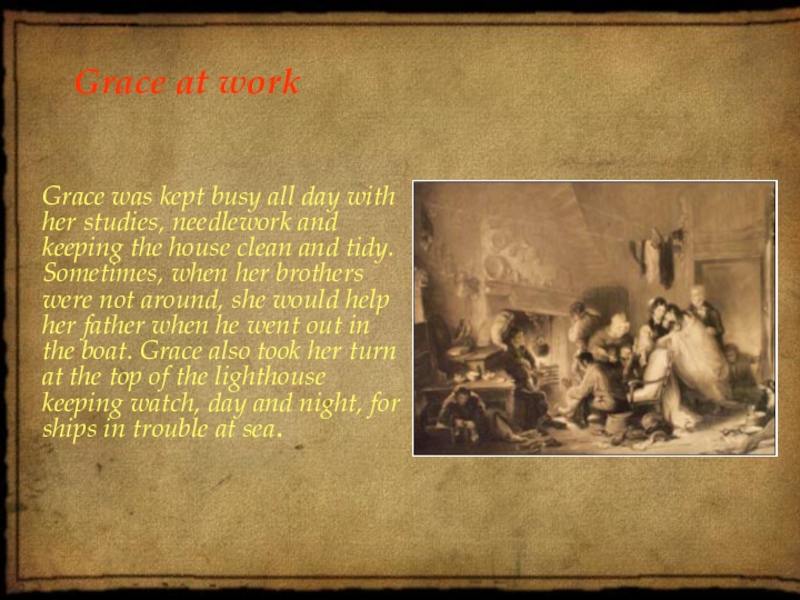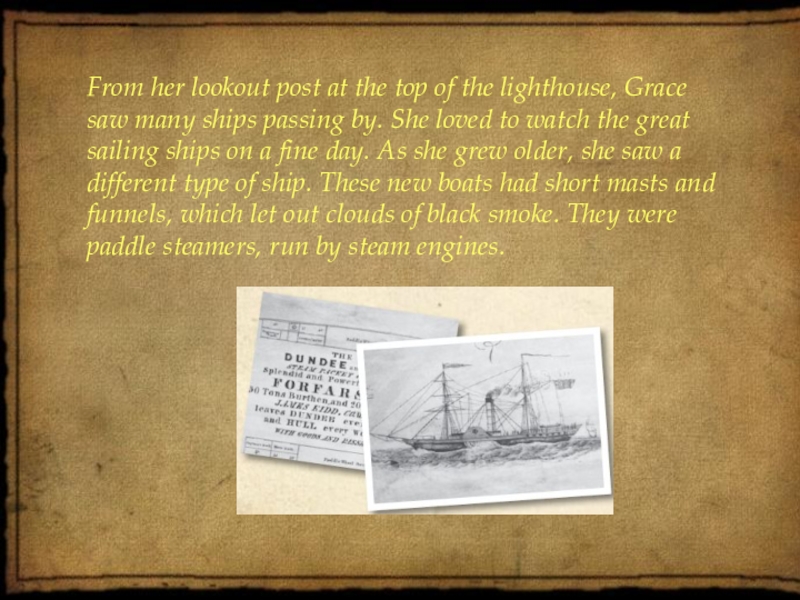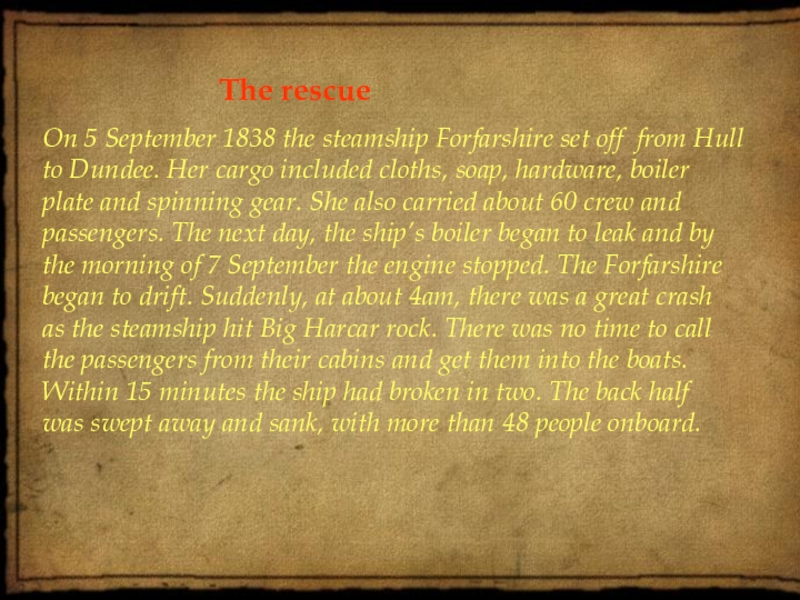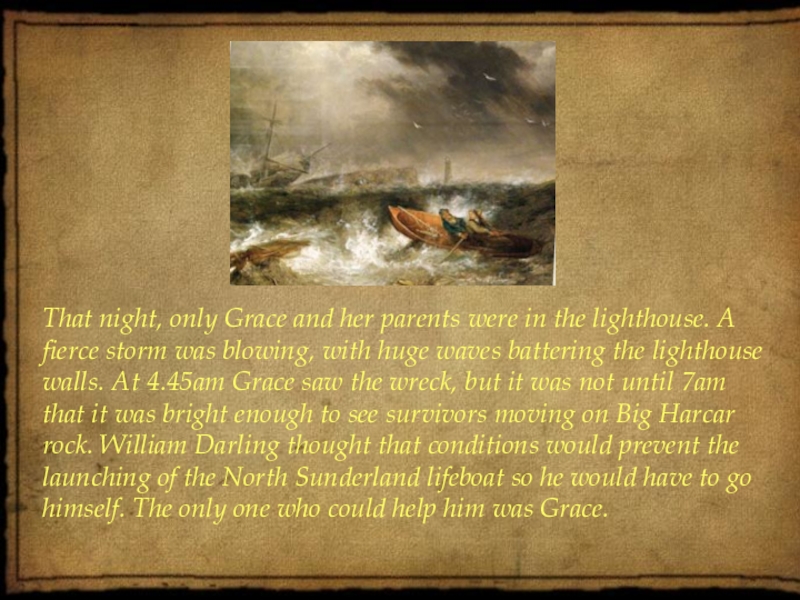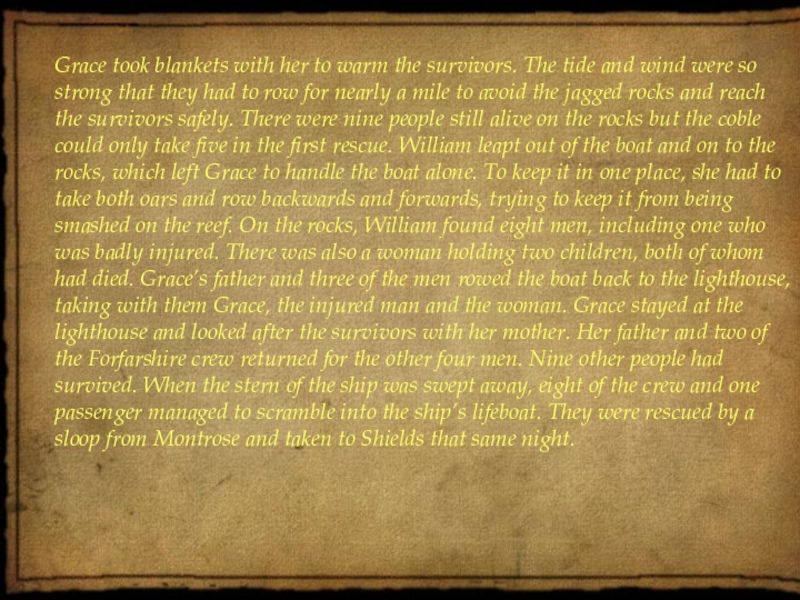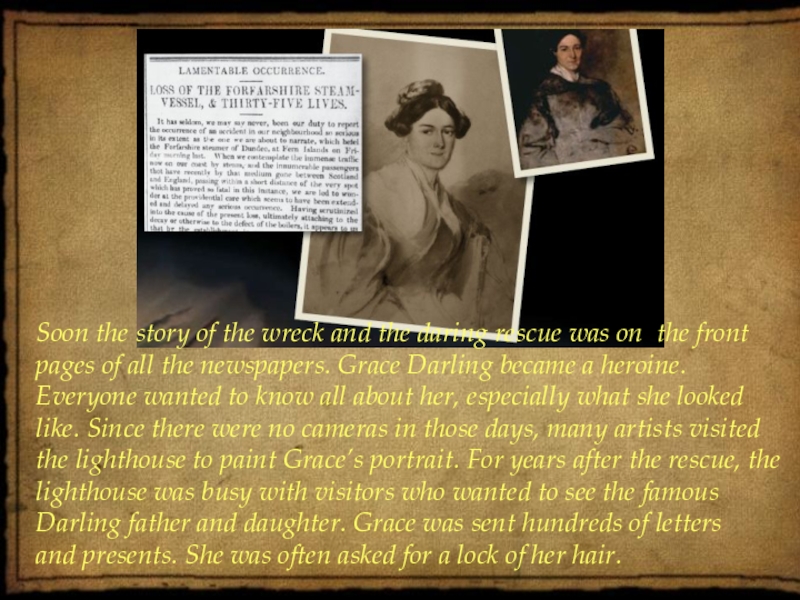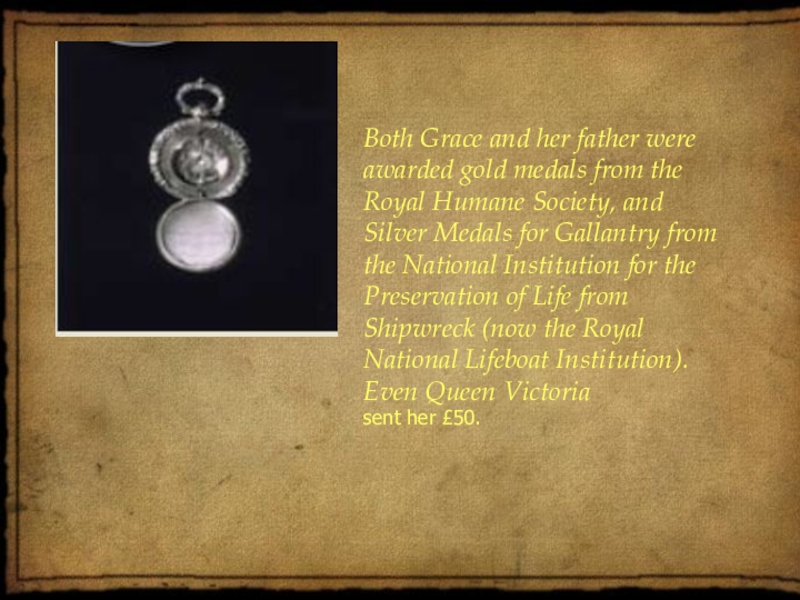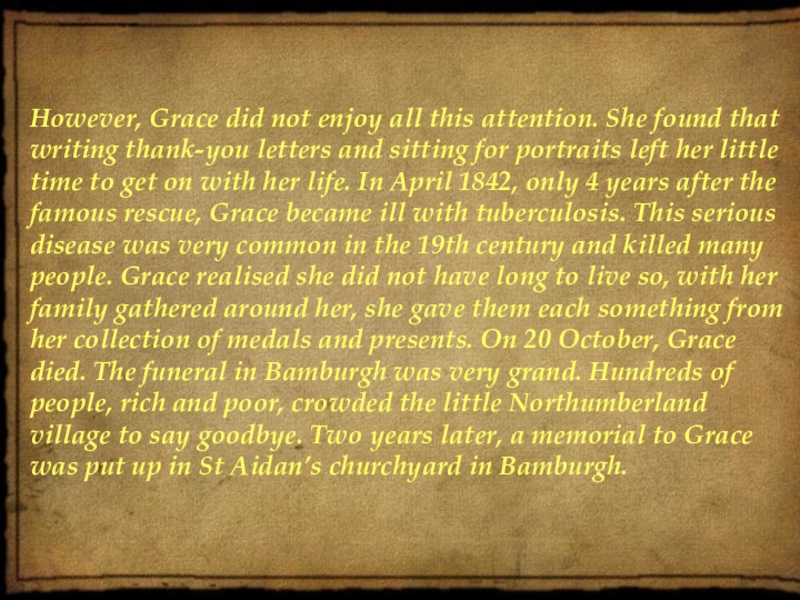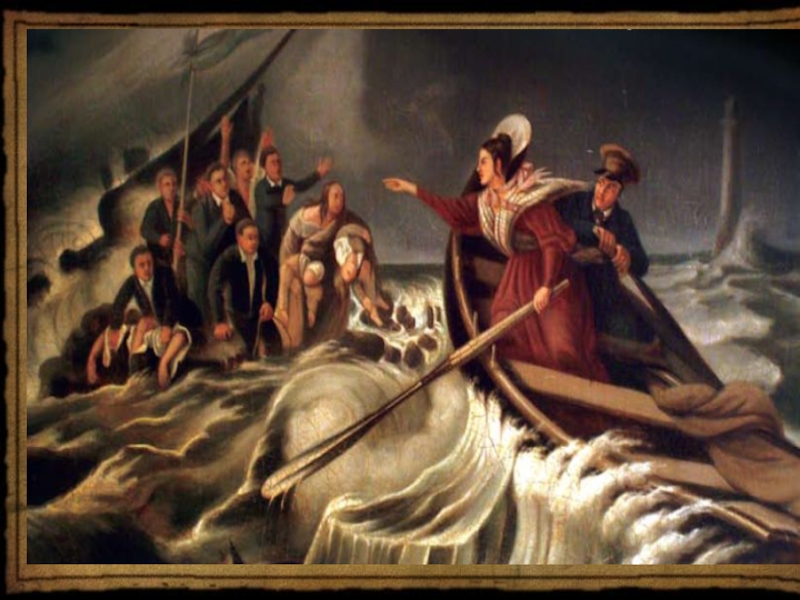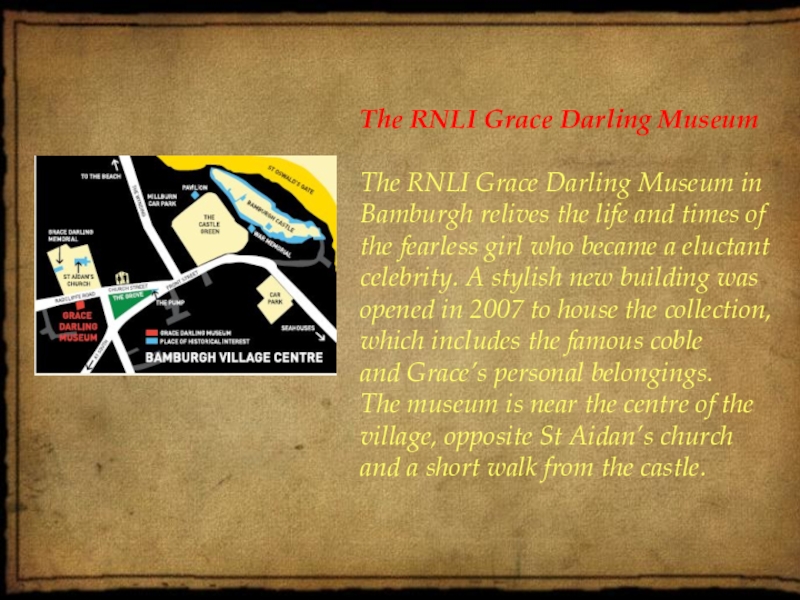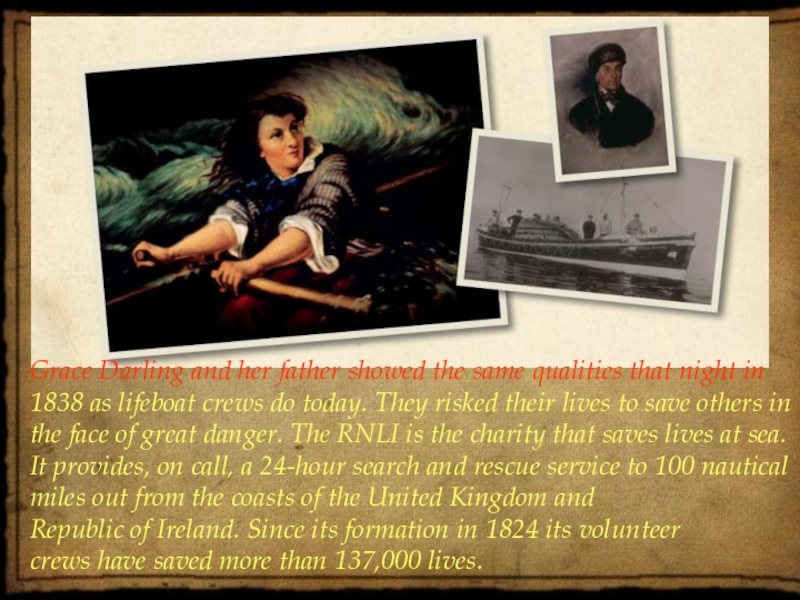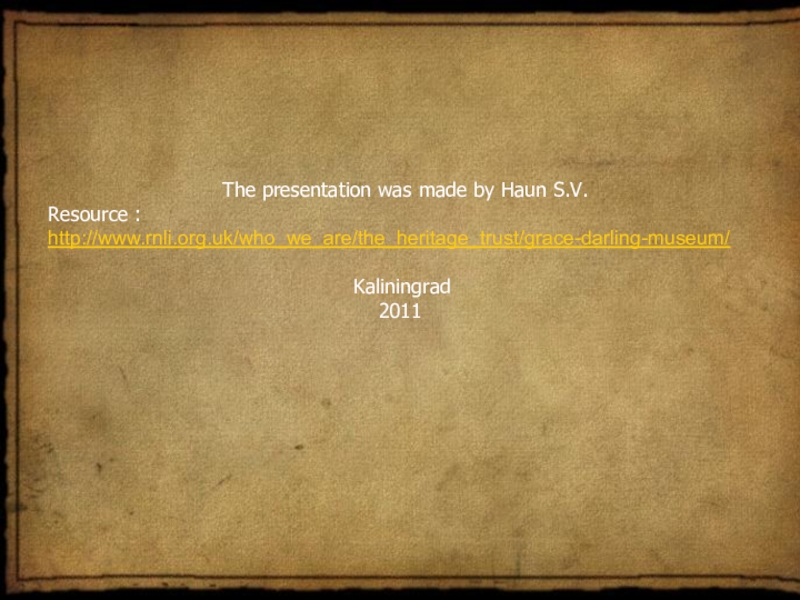- Главная
- Разное
- Образование
- Спорт
- Естествознание
- Природоведение
- Религиоведение
- Французский язык
- Черчение
- Английский язык
- Астрономия
- Алгебра
- Биология
- География
- Геометрия
- Детские презентации
- Информатика
- История
- Литература
- Математика
- Музыка
- МХК
- Немецкий язык
- ОБЖ
- Обществознание
- Окружающий мир
- Педагогика
- Русский язык
- Технология
- Физика
- Философия
- Химия
- Шаблоны, фоны, картинки для презентаций
- Экология
- Экономика
Презентация, доклад Грейс Дарлинг
Содержание
- 1. Презентация Грейс Дарлинг
- 2. The Darling familyGrace Horsley Darling was
- 3. When Grace was 3 weeks old, she
- 4. Grace’s home Grace’s home
- 5. Grace and her family spent most of
- 6. William Darling taught all his children to
- 7. The work was hard. Every day William
- 8. Grace at workGrace was kept busy all
- 9. From her lookout post at the top
- 10. The rescueOn 5 September 1838 the steamship
- 11. That night, only Grace and her parents
- 12. Grace took blankets with her to warm
- 13. Слайд 13
- 14. Soon the story of the wreck and
- 15. Both Grace and her father were awarded
- 16. However, Grace did not enjoy all this
- 17. Слайд 17
- 18. The RNLI Grace Darling MuseumThe RNLI Grace
- 19. Grace Darling and her father showed the
- 20. Слайд 20
Слайд 2 The Darling family
Grace Horsley Darling was born on
24 November 1815
cottage in Bamburgh, Northumberland. She
was the seventh child of nine, and the fourth
daughter of William and Thomasin Darling.
Horsley was her grandmother’s name.
Слайд 3When Grace was 3 weeks old, she was taken to Brownsman
Слайд 4 Grace’s home
Grace’s home
The lighthouse was
Слайд 5Grace and her family spent most of their time on the
Grace’s bedroom was on the third floor. The top level had the lantern, which warned ships of the dangerous rocks all around. The lantern was 25m above the sea.
Слайд 6William Darling taught all his children to read, write and do
Слайд 7The work was hard. Every day William had to polish the
recordings of the tides and making sure the lighthouse was kept in good repair.
The work was hard. Every day William had to polish the brass reflectors and clean the lamps and windows of the lighthouse lantern. He had to check the wicks and make sure there was enough oil in the lamps. Other duties included making detailed
recordings of the tides and making sure the lighthouse was kept in good repair.
Слайд 8Grace at work
Grace was kept busy all day with her studies,
Слайд 9From her lookout post at the top of the lighthouse, Grace
saw
sailing ships on a fine day. As she grew older, she saw a
different type of ship. These new boats had short masts and
funnels, which let out clouds of black smoke. They were paddle steamers, run by steam engines.
Слайд 10The rescue
On 5 September 1838 the steamship Forfarshire set off from
began to drift. Suddenly, at about 4am, there was a great crash
as the steamship hit Big Harcar rock. There was no time to call
the passengers from their cabins and get them into the boats.
Within 15 minutes the ship had broken in two. The back half
was swept away and sank, with more than 48 people onboard.
Слайд 11That night, only Grace and her parents were in the lighthouse.
Слайд 12Grace took blankets with her to warm the survivors. The tide
could only take five in the first rescue. William leapt out of the boat and on to the rocks, which left Grace to handle the boat alone. To keep it in one place, she had to take both oars and row backwards and forwards, trying to keep it from being
smashed on the reef. On the rocks, William found eight men, including one who was badly injured. There was also a woman holding two children, both of whom had died. Grace’s father and three of the men rowed the boat back to the lighthouse, taking with them Grace, the injured man and the woman. Grace stayed at the lighthouse and looked after the survivors with her mother. Her father and two of the Forfarshire crew returned for the other four men. Nine other people had survived. When the stern of the ship was swept away, eight of the crew and one passenger managed to scramble into the ship’s lifeboat. They were rescued by a sloop from Montrose and taken to Shields that same night.
Grace took blankets with her to warm the survivors. The tide and wind were so strong that they had to row for nearly a mile to avoid the jagged rocks and reach the survivors safely. There were nine people still alive on the rocks but the coble
could only take five in the first rescue. William leapt out of the boat and on to the rocks, which left Grace to handle the boat alone. To keep it in one place, she had to take both oars and row backwards and forwards, trying to keep it from being
smashed on the reef. On the rocks, William found eight men, including one who was badly injured. There was also a woman holding two children, both of whom had died. Grace’s father and three of the men rowed the boat back to the lighthouse, taking with them Grace, the injured man and the woman. Grace stayed at the lighthouse and looked after the survivors with her mother. Her father and two of the Forfarshire crew returned for the other four men. Nine other people had survived. When the stern of the ship was swept away, eight of the crew and one passenger managed to scramble into the ship’s lifeboat. They were rescued by a sloop from Montrose and taken to Shields that same night.
Слайд 14Soon the story of the wreck and the daring rescue was
and presents. She was often asked for a lock of her hair.
Слайд 15Both Grace and her father were awarded gold medals from the
National Lifeboat Institution).
Even Queen Victoria
sent her £50.
Слайд 16However, Grace did not enjoy all this attention. She found that
Слайд 18The RNLI Grace Darling Museum
The RNLI Grace Darling Museum in Bamburgh
celebrity. A stylish new building was opened in 2007 to house the collection, which includes the famous coble
and Grace’s personal belongings.
The museum is near the centre of the village, opposite St Aidan’s church and a short walk from the castle.
The RNLI Grace Darling Museum
The RNLI Grace Darling Museum in Bamburgh relives the life and times of the fearless girl who became a eluctant
celebrity. A stylish new building was opened in 2007 to house the collection, which includes the famous coble
and Grace’s personal belongings.
The museum is near the centre of the village, opposite St Aidan’s church and a short walk from the castle.
Слайд 19Grace Darling and her father showed the same qualities that night
Republic of Ireland. Since its formation in 1824 its volunteer
crews have saved more than 137,000 lives.
Grace Darling and her father showed the same qualities that night in 1838 as lifeboat crews do today. They risked their lives to save others in the face of great danger. The RNLI is the charity that saves lives at sea. It provides, on call, a 24-hour search and rescue service to 100 nautical miles out from the coasts of the United Kingdom and
Republic of Ireland. Since its formation in 1824 its volunteer
crews have saved more than 137,000 lives.
Слайд 20
Resource :
http://www.rnli.org.uk/who_we_are/the_heritage_trust/grace-darling-museum/
Kaliningrad
2011
The presentation was made by Haun S.V.
Resource :
http://www.rnli.org.uk/who_we_are/the_heritage_trust/grace-darling-museum/
Kaliningrad
2011

